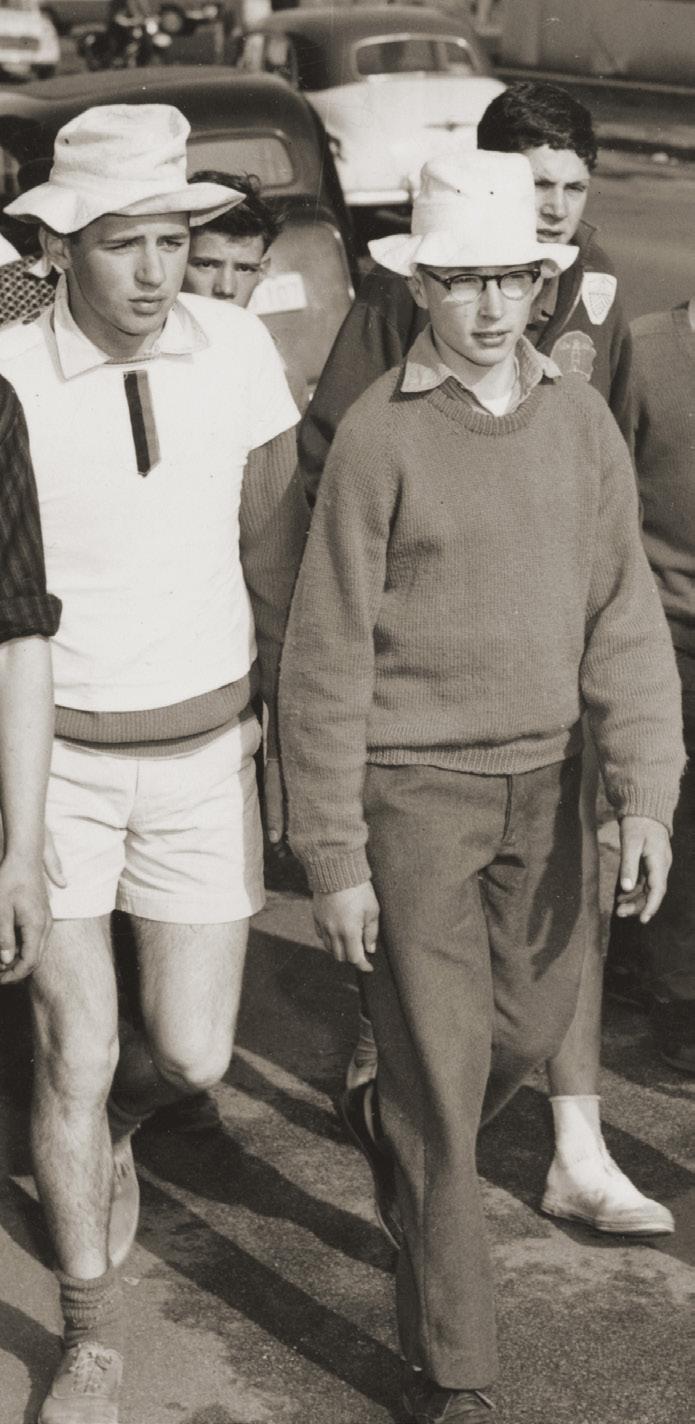
3 minute read
Walking warriors
News from Launceston Grammar caught up with alumnae (1977) and former Head Girl, Linda Quatermass about her Walkathon recollections from years past.
Linda, who was the biggest fundraiser for their chosen charity, Royal Guide Dogs For the Blind Association, says for those who braved the walk from Elizabeth Town to the Launceston Town Hall it had a bonding effect on each participating student whose experience was unlike today’s Grade 12 walkers in respect to creature comforts.
“Spare a thought for the walkers back in those days, when ‘hi tech’ had no meaning,” says Linda. “Warm meant flannelette shirts, greasy wool socks, army greatcoats or jumpers in lurid colours knitted by your gran.
“Decked out for a night on the road, our group of walkers were fed dinner at my parents’ farm in Sassafras and then driven in the school bus to our starting point.
“Eagerly jumping off the bus keen to get started, I remember the first XV111 heading off together at a trot into the void; the rest of us following in their wake. “We walked through the night aiming for Westbury where breakfast was promised. It seemed like a great adventure; an all-nighter camouflaged in school colours.”
For Linda most of the night was a blur with trucks pelting past their horns blasting, coins being flung at them and after the whoosh of the passing vehicle, the enveloping darkness.
“I remember the joy of trudging into Westbury where breakfast and a seat, was promised.

“It was very early in the morning and the mist was rising off the river. Sheep lifted their heads and followed us as we plodded along the road to the town hall.
“Parents and teachers were on hand to help us ease into chairs, remove our boots, pop our blisters, apply Band-aids, and feed us.
“When I arrived, there was already a large contingent of walkers, seated huddled over cups of tea or lying around the hall. It was strangely comforting to see that everyone looked as exhausted as I felt.”
Linda says the final leg into Launceston was slow.
“Those who had met us at Westbury now joined with us, urging us on. My focus was now on just walking placing one foot in front of the other and finishing. “The last 200 metres to the Town Hall was agony. Our muscles had ceased to respond, blisters were plump, and ankles swollen. But we made it and all in under 20 hours!”
And when asked what makes Walkathon so special, Linda reflects that for the Class of ’77 it certainly had a bonding effect.
“Whether we walked all of it or some of it, the walk was something we had done together. We learned about ourselves and about each other, what we could achieve, what we could put up with, the true grit in each of us, and what a difference it made sharing the experience with classmates and teachers.
“It didn’t really matter whether you arrived first or last, whether you walked all or part of the way, everyone’s contribution counted. We had become a team.” The Walkathon grew from a challenge by the late United States President, John F Kennedy, that a fit man should be able to walk 50 miles in 20 hours. Recent research has established that the challenge actually predates Kennedy and can be traced back to Theodore ‘Teddy’ Roosevelt, 26th US President (1901–1909).
The walk was widely reported in the world press and appeared in the Launceston Examiner where it was read by Headmaster Don Selth. He put the challenge to the prefects over a breakfast meeting. The year was 1963 and nine boys plus teacher Bruce Dowse set off claiming the title of inaugural Walkathon warriors.
1963, the first 50 mile Walkathon









